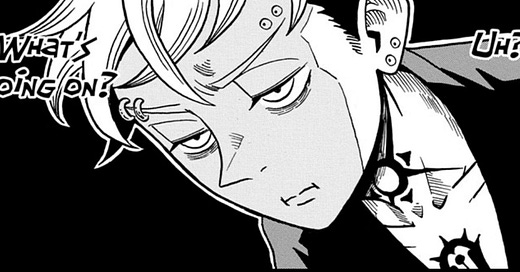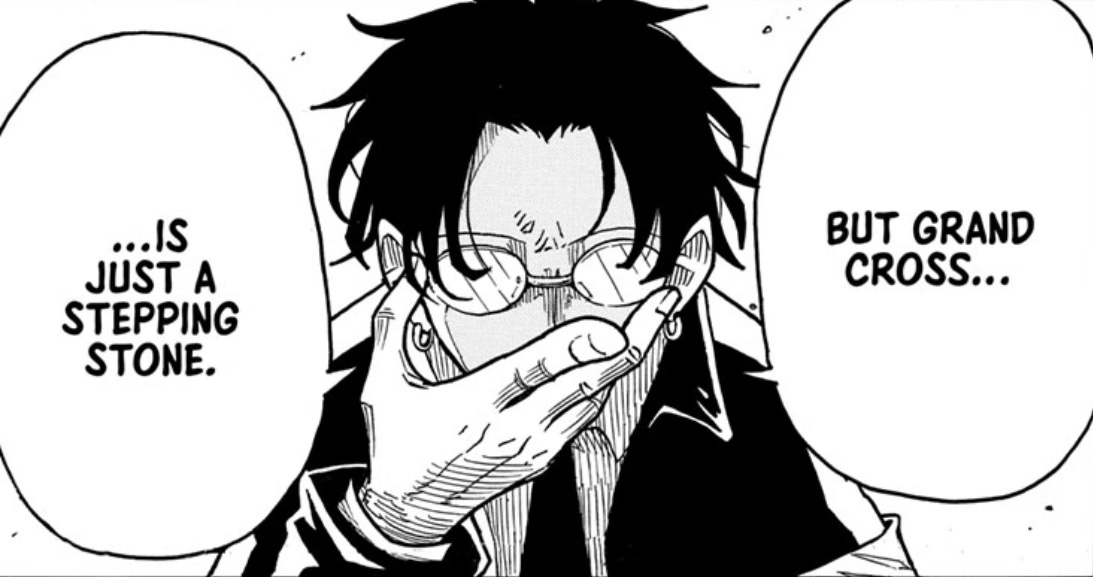Preface!
Can I just acknowledge really quick that I genuinely try to make my article titles sound less stuffy and academic, but obviously I’m failing. Quantifying Emotions sounds like a psychology book published by a university press. Not what I’m about to talk about involving goofy exorcists, high school drama, and Lord of the Rings parallels.
Anyway, Ultimate Exorcist Kiyoshi! This is such a fun full circle moment because I was stoked when this title appeared on Shonen Jump. I have tried many times to get into Blue Exorcist, and I still think I could, but it just wasn’t working. Then I met Kiyoshi and my exorcism itch was scratched. And yes, that is an itch I have often. I often say that in an alternate reality, I would be a demonologist. But I digress.
From the moment the first chapter dropped (I covered it on MangaCraft!) to where it is now, I am just tickled by this series.
Preface over.
There are a lot of moments in film and television and storytelling that are difficult to fully grasp the emotional weight of. I mean, how can I relate to Frodo’s inability to drop the ring into the fire? I wrote a piece once called “Frodo Sucks” because, in my eyes, he had failed. But did I stop to try to understand the nuances of that failure? Well… yes, I did. I just couldn’t quite grasp it.
But elsewhere in Lord of the Rings, the quantification of emotions (I’m sticking by this phrase now) is really apparent.
I’ll bring up Boromir, with apologies to my wife who hates him, because he has moments of emotional resonance that are quantifiable by other moments in the story.
For instance, when he confesses to Aragorn that there is no strength in Gondor anymore. Like, okay Debbie Downer, cry about it. But through the use of the flashback where we see Boromir and Faramir celebrating taking Osgiliath, we can appreciate the lengths these two have gone to retain the strength of Gondor and understand the despondency of Boromir’s admission shortly before his (tragic) death.
In Ultimate Exorcist Kiyoshi, we see a similar effect.
Before we get into Ultimate Exorcist Kiyoshi, here’s what you need to know.
Kiyoshi is (spoiler) the ultimate exorcist. He’s high school aged, but remarkably powerful. So much so that he just eviscerates even the highest level demons. Within the first few chapters, he kills off two of the 13 demon lords and befriends a third. The emotional tension of the story doesn’t stem from Kiyoshi’s battles with evil. He’s too over-powered for that. They stem from his attempts to have a social life in high school, which he is failing at miserably.
Despite slaying elite demons, he can’t function without severe social anxiety, particularly when girls are around.
And that’s all you need to know.
Not going to lie, my one hesitation surrounding Ultimate Exorcist Kiyoshi—in the early going, anyway—was how easily he dismissed demons. Within moments. Even the highest level ones, he took care of relatively easily.
“Where does this go from here as far as tension is concerned?” I asked myself aloud one day.
The answer came quickly—to high school.
While in high school, trying to have a social life, Kiyoshi is awkward and horribly afraid of interactions, but craves human connection. He is your quintessential high schooler, in that sense.
And that’s the thing, in isolation, an over-powered exorcist fighting hordes of demons or an awkward high schooler trying to fit in, both of those make for compelling series if you separate them. There are countless series about both.
But putting them together, it has tremendous effect, especially comedically.
Within pages, I witnessed Kiyoshi flawlessly dismiss a high-level demon with no stress whatsoever and then I stressed over how bad of a bowler Kiyoshi is and how that would affect his social standing.
In no realistic world is vanquishing demons and bowling on equal levels of tension, but that’s why storytelling is special. It can make readers more stressed about bowling than about demons.
Going back to the Boromir example, what makes both of these scenes important is that it allows us to use one scene to have a better frame of reference for the other scene. Without understanding Boromir’s triumphs for Gondor, how can we quantify the deep emotionality of his failures? Without knowing his failures, how can the successes resonate?
By the same token, without Kiyoshi’s ease of dispensing powerful demons, how could we quantify the deep emotionality of his high school stress? And without his struggles to socialize, how could we appreciate just how powerful he is as an exorcist?
Aside from just being a comedic gold mine, Kiyoshi’s plight is a fascinating one, because it also reminds us to better empathize with what other people find challenging. Just because someone can vanquish demons doesn’t mean that life is easy for them. Just because someone is adept as navigating social circles in high school doesn’t mean they are fearless enough to face demons.
And Ultimate Exorcist Kiyoshi quantifies this in other ways too. There’s another exorcist named Hitoshi who strives to be an elite exorcist, but he just can’t defeat demons with the same ease as Kiyoshi. Yet he’s quite popular in high school. In that sense, he’s the more “normal” character, right? Which makes him a solid foil for Kiyoshi too (I do love a good foil).
But the purpose he serves in the story, of allowing readers to see that it actually is quite difficult to defeat demons, also helps us understand that Kiyoshi is (spoiler) the ultimate exorcist. Even as he struggles to formulate complete sentences when talking to his classmates in regular high school.
In a way, this reminds me of the piece I did recently on Yaiba: Samurai Legend about how what a character sees informs the reader about that character. Bonus points when that character sees another character, because the takeaways are twofold.
Different storytelling concept, but same takeaway. How characters interact with the world they’re in tells readers so much about them. With only so much room to really go into depth, being economical with how characters grow, or how you quantify their triumphs and failures, is so important. And so fun, for readers.







